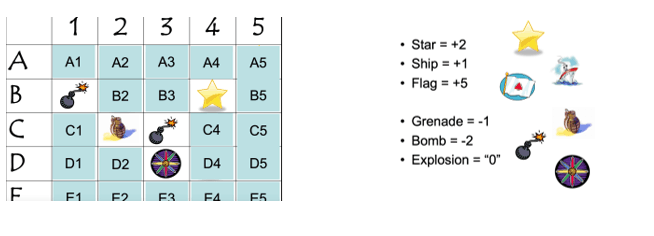A few weeks ago, I became deeply troubled as an educator. While I have frequently heard complaints from colleagues that our state’s standards have taken the personality out of teaching and have caused kids to hate school, I was recently startled to hear similar sentiments expressed from one of my preservice teachers! After being out in the field for a few weeks, one of my undergraduates told me that she didn’t think she could teach anymore since she felt like the standards would take away her abilities to think and be creative. This statement hit me at my core and instantly brought me back to my experience as a classroom teacher.
I have always been an educator who has worked under standards. Even though I was trained to meet standards, I was also trained to make learning engaging. Did I always agree with the way every standard was written? No! I, however, made it an intellectual challenge to find the most creative and engaging way for students to learn those topics.
As I entered back into reality of my methods class, I did what any self-respecting professor does: I threw-out the rest of the lesson plan and fired up my laptop. Buried in the depths of my Google Drive is a folder that I’ve kept for close to 15 years. It was my source of inspiration as a teacher, and during this late evening class, it served, once again, as my source of support for my struggling undergrads (as it turned out, I had more than one).
Before I modeled some of these games for my preservice teachers (just like I will do for you in a second), I shared this thought with them: we go into this profession because we love kids. Kids, in turn, gift us with their time. If we want to reap the benefits of those gifts, we have to find ways for them to want to engage with us. From my perspective, what teachers everywhere (my undergraduates included) are struggling with isn’t so much the standards, but how to engage students who are a part of a society that is quick, on-demand, and flashy.
So how to you engage kids? Try these three low-prep strategies that I hope will work for you as you help students master rigorous grade-level expectations.
Game 1: The Bomb
For my purposes, I’m going to be using Grade 9 ELA RI standards 1, 2, 7, 9 for this activity.
Set-Up: First, students are given time to read a foundational document (for example, MLK’s “I Have a Dream” speech) and complete a text rendering activity independently (it could be as simple as a two-column Cornell-note activity). Students are assigned into groups of four or five. Then the teacher plays an excerpt of the reading of the Brown v. Board of Education Supreme Court Justice’s opinion.
The Game: Each team is given 10 points on the board. The teacher poses a question to all groups. For example, “How do both mediums take a similar view about slavery?” Each group is given a few minutes to discuss their answers. The teacher calls on an individual in team 1 to provide their team’s answer. If the team provides a valid answer or rationale, they will get to choose a space behind the board. (If they are incorrect, head to the next team).
Before choosing their space, ask them, Do you want whatever is behind the square to go on your score or another team’s score? Now you’ve got instant engagement! Record the points as the questions are answered. Of course, this game can be played in the math classroom too (it’s great for multi-step application problems). If you click here, you’ll see the downloadable game board that has positive points and negative points.
Game 2: Heart Attack
Set-Up: Divide students into groups (four or five students per group works best). Have each student assign themselves a number; if each group does not have the same number of students, students will have to take two numbers. Give each group one mini-white board and one marker.
The Game: Ask students a question based on a complex text or some type of problem. Give students the opportunity to discuss as a team. Then, randomly call a number. It is that person’s responsibility to record the answer for their team and hold the white board up. You can assign two points for first place and one for second based on speed and accuracy.
Game 3: Casino
This is one that I use in professional development with teachers all the time – I promise you, if adults love it, kids will love it as well.
Set-Up: Place students into groups (two or three students per group works best). Group sizes do not have to be equal. Give each group a piece of paper and one writing implement. Ask them to divide their paper into three columns and label the columns as the image below shows: Wager, Question, Amount. Each team starts with $1,000. Begin by explaining the casino rules: once pencils are down, if you are caught writing, you’ll lose money. If you are correct in your answer, you gain whatever you wagered; if you are incorrect, you lose what you wagered.
The Game: Ask students to place their wager on a question that they have not been told yet. The maximum wager is the total minus $100 (thus every team is always in play). Count down from 5; once the time is up, whatever they have in their wager column is what they are working with. Ask the question and tell the teams how long they have to discuss. They must write their answer in the wager column. When the time is up, anybody who is still writing is disqualified and loses money. If they are correct, they add to their amount; if they are incorrect, they subtract. After a couple of questions, poll the casino to see how much money each team has. The winning team is the team that has the most amount of money at the end.
If you really want to make this one zing in the ELA classroom, give kids a complex text and have them figure out different meanings of Tier 2 words based on the passage. In the math classroom, this is an awesome opportunity to have students practice problems that get at the Major Work of the Grade.
Although many feel that our standards can be dry, they do not have to be. I encourage you to try these activities and share out your own. I’d love to add to my Google Drive!


















Great ideas. I can’t wait to share them with our staff.
I love the idea of the first game. I downloaded the game board but when I try to use it it’s not possible to reveal a random square. The squares are always revealed in the same pattern.
Ah yes, I see what you mean. We’re working with the author to resolve the issue. Thanks for bringing it to our attention!
Has this been resolved?
Hello:
The author has shared an alternate link with a downloadable file. The link within the article has been updated.
Thank you,
Student Achievement Partners
Can’t wait to try these! Thanks for sharing!